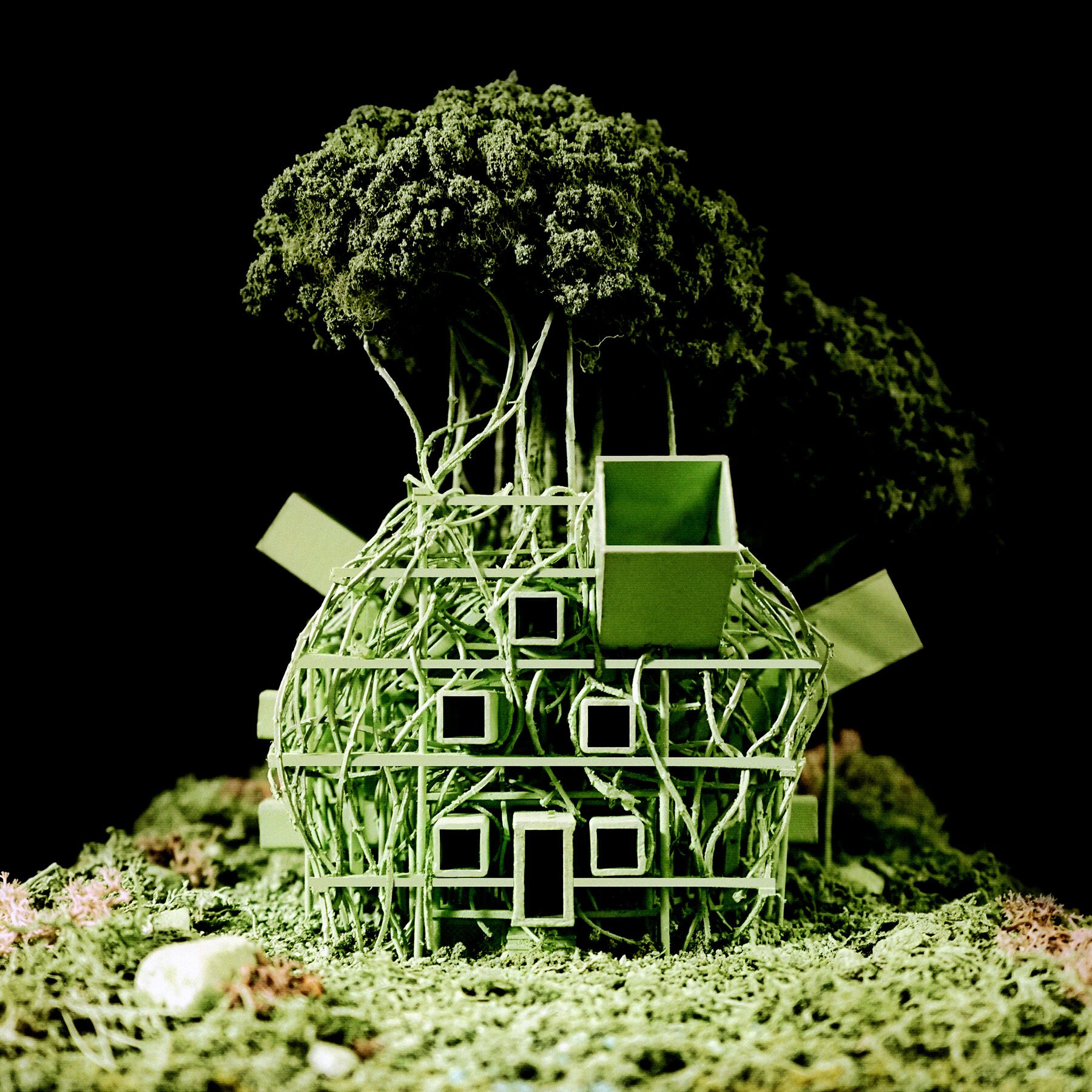Home Alive
Multi-species Facades and Engineered Living Materials
HOME ALIVE: Multi-species dwelling made from 100% living grafted woody plants.
This architectural design research aims to investigate the structural and remediated applications of Engineered Living Materials (ELMs) in the built environment and their impact on biodiversity, focusing on the intersection between traditional earth-based building methods and digital innovations in fabrication. The key focus of this project involves ELMs in which a technologically sophisticated parametric reusable scaffolding will guide grown native trees and a green wall matrix. Over time, the two reciprocally supportive systems intertwine and merge into a single plant-technical composite structure. In addition, habitat inserts made from 3D-printed earthen clay and other woven biomaterials are embedded into the architecture, creating a vertical ecosystem that houses a variety of flora and fauna and demonstrates the possibility of cohabitation with other species.
We have worked to generate a range of living materials with the characteristics of biological systems: self-replication, self-regulation, self-healing, ecological responsiveness, and self-sustainability. The ELMs are framed as engineered materials composed of living cells that form or accumulate the material itself or regulate the functional performance of the material in a particular mode. The main principle is to expand the borderlines and limits of synthetic biology, materials production, biomaterials, and artificial intelligence and push their evolution into innovative territories.
What are the objectives of building against extinction? 1) To deepen our understanding of ELMs and their potential use in the built environment, specifically focusing on low embodied carbon, earthen clays, biomaterials, landscape designs, and living woody plant structures. 2) To advance the implementation of these materials through cutting-edge computational design technologies and new-fangled A.I.-based formats. 3) To install living structures based on extensive research, with an array of auditory and visual sensors to monitor environmental changes over time and provide real-time experiential data. 4) To share the knowledge gained from this architecture through visualizations and the development of a curriculum with a broader audience through community outreach, seminars, and institutional forums.
Intrinsic to good design practice is the conviction that biology is technology. Nature has evolved an ability over epochs to allocate assets, conserve energy and regenerate itself. Design projects that aim to channel nature's intelligence to develop new, restorative materials and building processes that perform ecosystem services by actively filtering the air, water, and soil and creating opportunities for life to thrive in the built environment. Biomaterials have evolved from inert resources that lack interaction with the body to biologically active, instructive materials that host and provide signals to adjoining cells and tissues. ELMs (Engineered Living Materials) contain living cells for responsive function and polymeric matrices for scaffolding function and, thus, can be designed as active and reactive biomaterials. This analysis discusses materials incorporating microorganisms as the living, bioactive component. Microorganisms can provide complex responses to environmental stimuli, and they can be genetically engineered to allow user control over responses and the integration of numerous inputs. The engineered microorganisms can generate a matrix, such as in biofilms, or be incorporated in matrices using various technologies, such as coating, 3D printing, spinning, and microencapsulation.
Through assorted vigorous public outreach platforms, we have shared the knowledge gained from this research with a broader audience to offer new design approaches for the future. We have confidence that disseminating this research helps onboard partners in developing restorative building methods to enrich flourishing multi-species ecosystems.
Terreform ONE: Mitchell Joachim (Principal Investigator), Vivian Kuan (Executive Director), Nina Anker, Nicholas Lynch, Sky Achitoff, Mamoun Friedrich-Grosvenor, Brook Boughton, Claudia D'Auria, Avantika Velho, Grace Jung, Iyad Abou Gaida, Connor Lambrecht, Nicholas Gervasi, Tara Cotrim, Zander Leff, River Prud’Homme, Vivian Jiang, Robin Stiefel, Lisa Wood Richardson.














